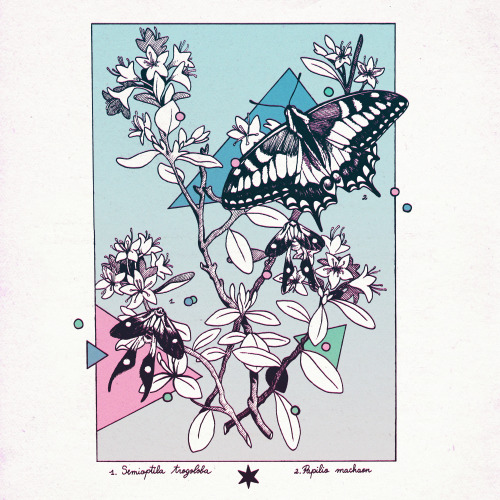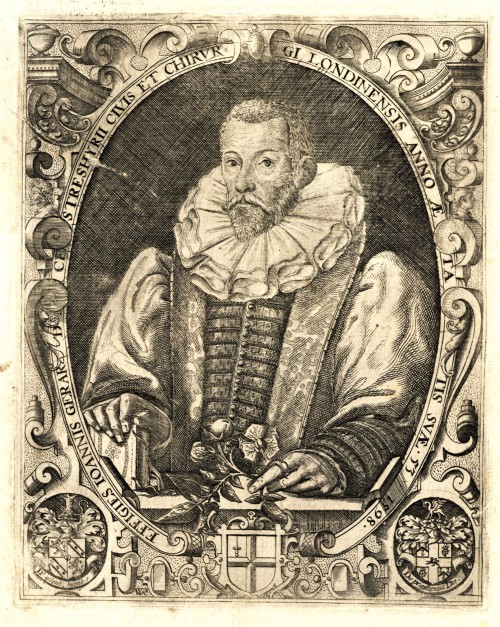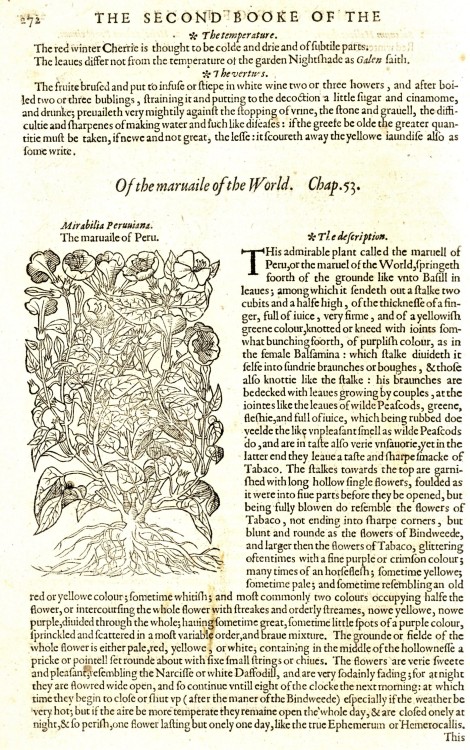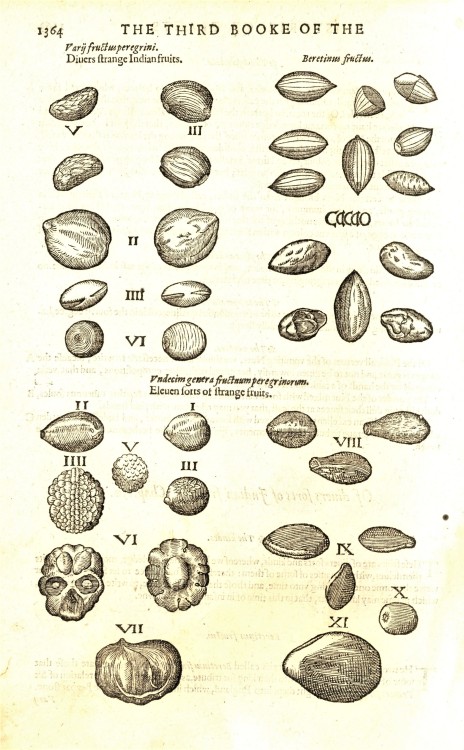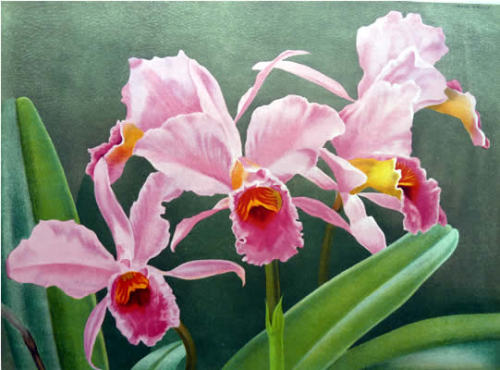#botanical illustrations
【Memphis curiosities】
Colored version of this set of botanical illustrations. These pieces were commissioned to decorate a doctor’s office ♥
Post link
Science Saturday: Gerard’s Herball
Among our favorite books in the collection is the 1597 first edition of English herbalist and gardener John Gerard’s The Herball, or, Generall Historie of Plantes, published in London by the Queen’s Printer John Norton. Besides its important place in the popular British understanding of plants, we are also impressed by its folio-sized, 1,484-page heft and its hundreds of delightful woodcut illustrations.
Gerard himself was not a botanical scholar. He was, rather, a high-ranking barber-surgeon, and as such maintained a strong interest in herbalism, supervising significant gardens, and becoming internationally recognized as a dedicated horticultural enthusiast. Despite his lack of scholarship, he is considered one of the founders of botany in the English language, and was among the earliest Renaissance natural historians, relying on empirical evidence rather than ancient authority, following in the line of such botanists as Leonard Fuchs and Gerard’s fellow plant enthusiast Matthias de l'Obel.
Gerard had already gained some notoriety with his earlier 1596 Catalogus arborum, fruticum, ac plantarum, a catalog of 1,039 rare plants he cultivated in his garden at Holborn, and it was the printer John Norton who approached Gerard with the idea of producing an English version of Flemish botanist Rembert Dodoens’s popular herbal, Stirpium historiae pemptades sex published in 1583, which was itself a Latin version of an earlier Flemish work by Dodoens, the Cruydeboeck published in 1554. Earlier work on a popular English-style herbal (Dodoens’s herb book had already been translated into English in 1578) had been attempted by English botanist Robert Priest before he died in 1596 and Gerard has been accused of plagiarizing Priest as well as Gerard’s contemporary l’Obel.
This may or may not be true, but what is true is that only 16 of the approximately 1,800 woodcuts used in the Herball are original. Norton rented the majority of the woodblocks from the Frankfurt woodcutter and printer Nicolaus Bassaeus, which had already been used in several other previously published botanical publications. Despite its derivative nature, Gerard’s Herball remained a popular, standard English reference source for well over a century, with revised and updated editions produced in 1633 and 1636.
Viewother posts that include Gerard’s Herball.
Viewother posts with botanical illustrations.
ViewotherScience Saturday posts.
Post link
“An orchid in a deep forest sends out its fragrance even if no one is around to appreciate it.”
Love Botanical Illutrations , flowers are like whole ecosytems , Mother Nature is the ultimate designer !
Henry George Moon an English landscape and botanical painter, loved nature and is noted for his orchid paintings. His Illustrations were featured in “Reichenbachia”, a monthly publication named in honour of Heinrich Gustav Reichenbach of Hamburg, the great orchidologist.
Post link
Awkward Botanical Sketches #4: Boise Goathead Fest Edition

Covid-19 be damned, Boise Goathead Festis happening in 2020. However, since we’re in the middle of a pandemic and the number of infections in Idaho have been far greater than we’d like them to be, this beloved, summertime event (now in its third year) is going to look quite a bit different this time around. No giant bicycle parade snaking through downtown Boise, no big gathering in the park to…
witches weeds - jimsonweed datura stramonium,hemlockconium maculatum, enchanter’s nightshade circaea lutetiana, deadly nightshade atropa belladona, henbane hyoscyamus niger, moonflower datura innoxia, wolsfbane aconitum napellus
i’ve come across the concept of witches weeds a few times in my botanical wanderings, above are a few of my favorites. a word of warning - every plant above except for enchanter’s nightshade are poisonous plants. please do not go foraging for these plants, some of them can even create symptoms just by touching or breathing in near the plant.
Post link

Thelarge red or the party coloured Crowfoote of Asia would be make for such a nice tattoo! This woodcut comes from Theatrum botanicum (1640).

